This Religion Called Christianity 11
Mike Ervin
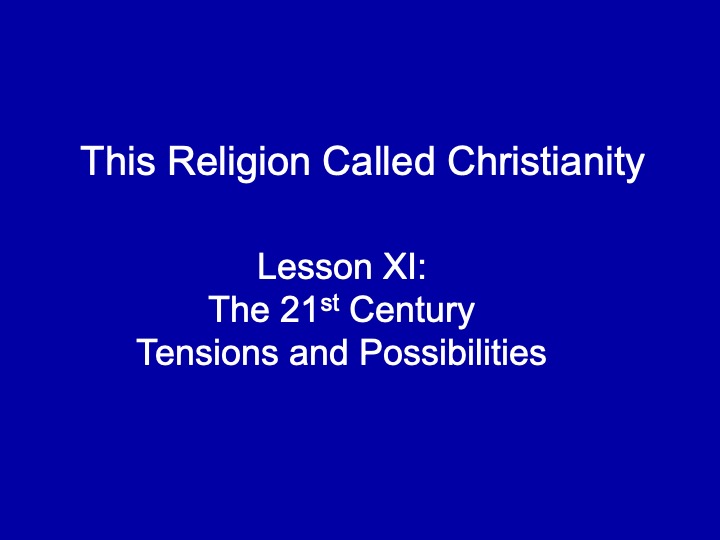
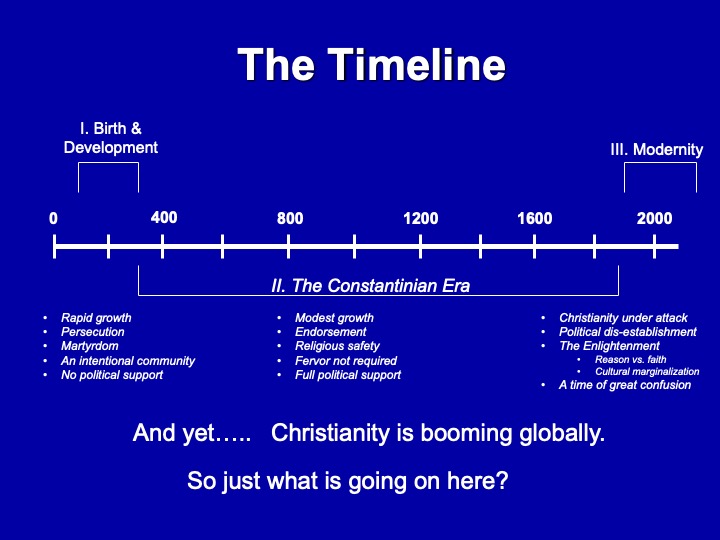
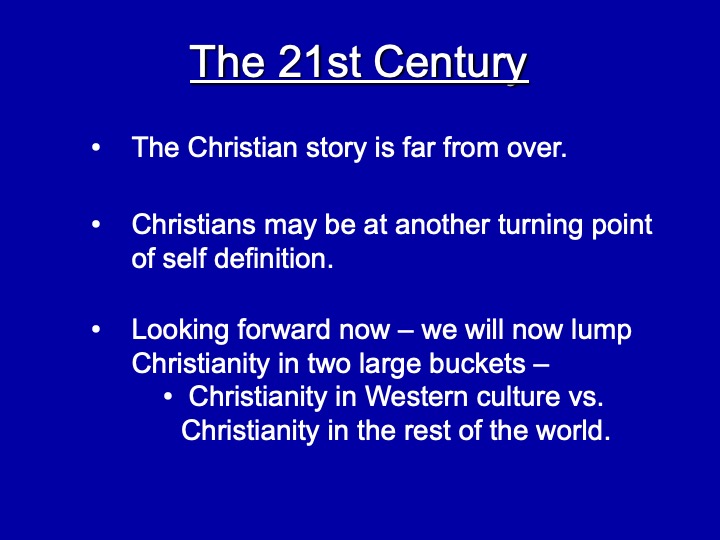
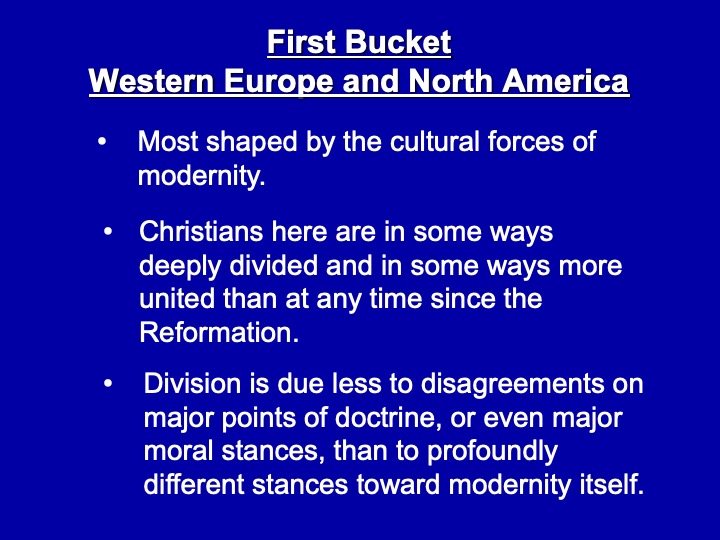
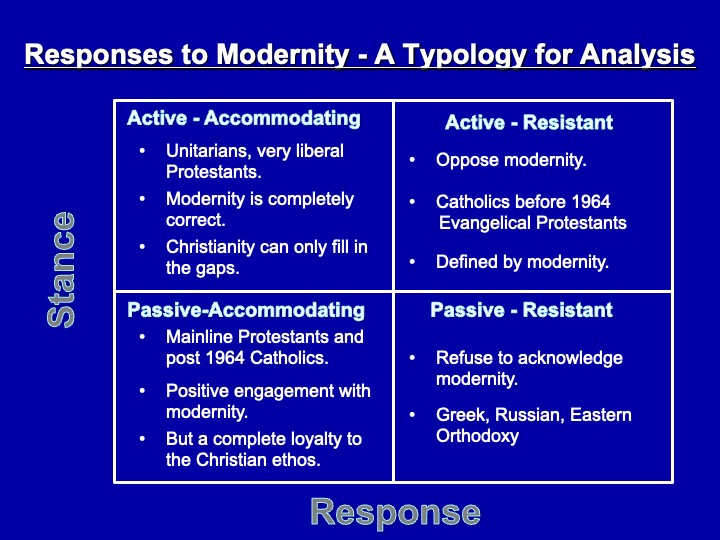
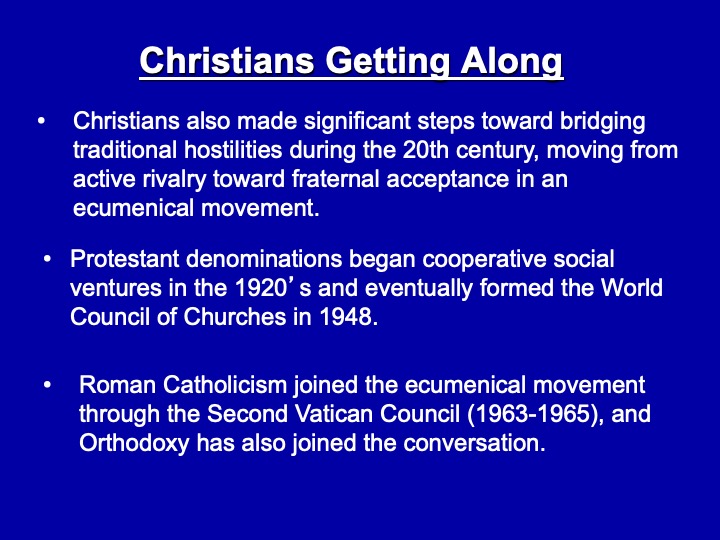
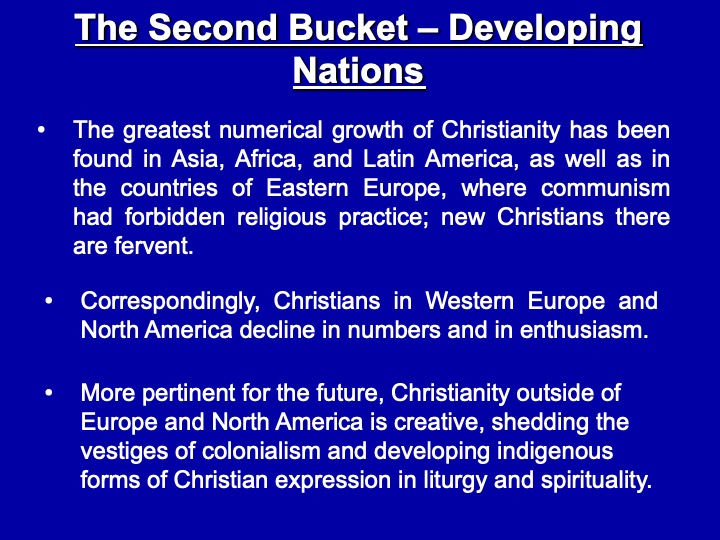
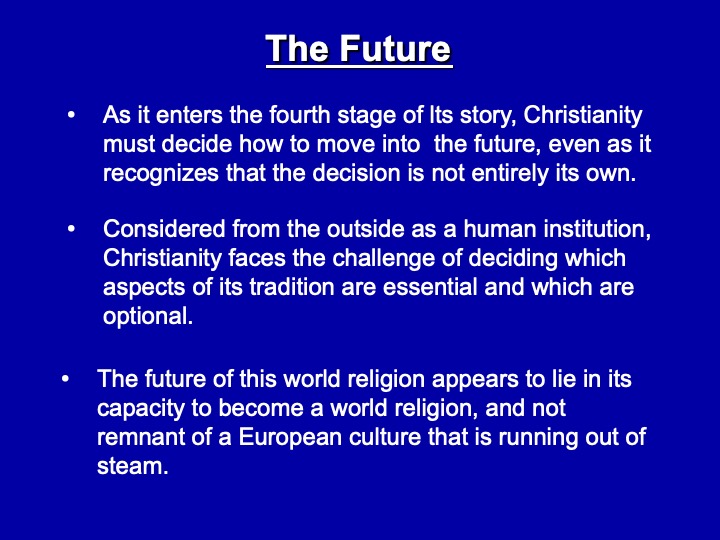

This Religion Called Christianity 11
Links
< Home Page > < This Religion Called Christianity >
This Religion Called Christianity
Class Eleven - Tensions and Possibilities
Scope: A religion that commands the allegiance of a considerable part of the world's population is not likely to disappear soon. Nevertheless, Christianity faces a number of challenges. Especially in the First World, Christians are deeply divided concerning the proper way to respond to modernity. These divisions affect the understanding of Scripture, politics, and the intellectual life. Internally, Christians also face the challenge of rediscovering the heart of their religion within so many layers of tradition and of translating the good news into intelligible and credible forms of expression. At the same time, a variety of religious impulses throughout the world indicate that, despite the many premature obituaries, this ancient and complex religious tradition remains lively and, for many, life-giving.
Outline - This Religion Called Christianity
1. Christianity has a long and complex story that is not yet over. Indeed, it may be entering into its fourth and most critical phase of development as a truly world religion.
A. The first stage, of approximately 250 years, was that of birth and development, when Christianity was truly an intentional religious community forced to negotiate its identity in a pluralistic world without the support of culture or the state.
B. The second stage was the long period (some 13 centuries) when Christianity was an established religion and actually a source of culture in the West.
C. The third stage, of about 2 centuries, consists in the struggle caused by cultural marginalization and political disestablishment.
D. At the start of the 21st century, the Christian story is far from over.
Indeed, Christians find themselves at a dramatic turning point of self-definition as they seek to discover which of the stages of its story best prepares it for the future.
This Religion Called Christianity
II. In the First- World countries most shaped by the cultural forces of modernity, Christians are in some ways deeply divided and in some ways more united than at any time since the Reformation.
A. Division is due less to disagreements on major points of doctrine concerning God or Christ, or even major moral stances, than to profoundly different stances toward modernity itself, especially on such issues as the authority of Scripture.
1. The active-resistant response seeks to oppose modernity in the name of a distinctively Christian culture. Roman Catholicism and Evangelical Protestantism represent this stance.
2. The passive-resistant stance refuses to acknowledge modernity and cultivates continuity with the past. This is the style of the Orthodox churches.
3. The passive-accommodating stance seeks a positive engagement with modernity while maintaining loyalty to the heart of the Christian ethos. Mainline Protestant denominations tend to follow this path.
4. The active-accommodating response is found in some liberal Protestant groups. Here, modernity sets the standard and Christianity seeks to conform itself to the dominant culture. Reading the Scriptures is something of a salvage operation--trying to determine which parts of the Scriptures should be dropped and which parts should still be considered. This approach has, paradoxically, been identified with certain Anglican bishops, with the Jesus Seminar, and much historical research on Jesus. Here, Christianity has to reinvent itself on the basis of the empirically revived Jesus.
B. Christians also made significant steps toward bridging traditional hostilities during the 20th century, moving from active rivalry toward fraternal acceptance in an ecumenical movement.
1. Protestant denominations began cooperative social ventures and explored shared dimensions of faith and morality through the World Council of Churches. Conversation and cooperation replaced competition.
2. Roman Catholicism joined the ecumenical movement through the Second Vatican Council (1963-1965), and Orthodoxy has also joined the conversation.
3. The ideal of unity is sought less through a structural uniformity than through the recognition of a legitimate diversity in Christian life.
III. The future for Christianity, however, may lie less in the First World than in developing nations.
A. The greatest numerical growth of Christianity has been found in Asia, Africa, and Latin America, as well as in the countries of Eastern Europe, where communism had forbidden religious practice; new Christians there are fervent. Correspondingly, Christians in Western Europe and North America decline in numbers and in enthusiasm.
B. More pertinent for the future, Christianity outside of Europe and North America is creative, shedding the vestiges of colonialism and developing indigenous forms of Christian expression in liturgy and spirituality.
This Religion Called Christianity
IV. As it enters the fourth stage of lts story, Christianity must decide how to move into the future, even as it recognizes that the decision is not entirely its own.
A. Considered from the outside as a human institution, Christianity faces the challenge of deciding which aspects of its tradition are essential and which are optional.
B. Considered from the inside as a believing community, Christianity must discern how God is at work in the world and shape its response accordingly.
C. The future of this world religion appears to lie in its capacity to become a world religion.